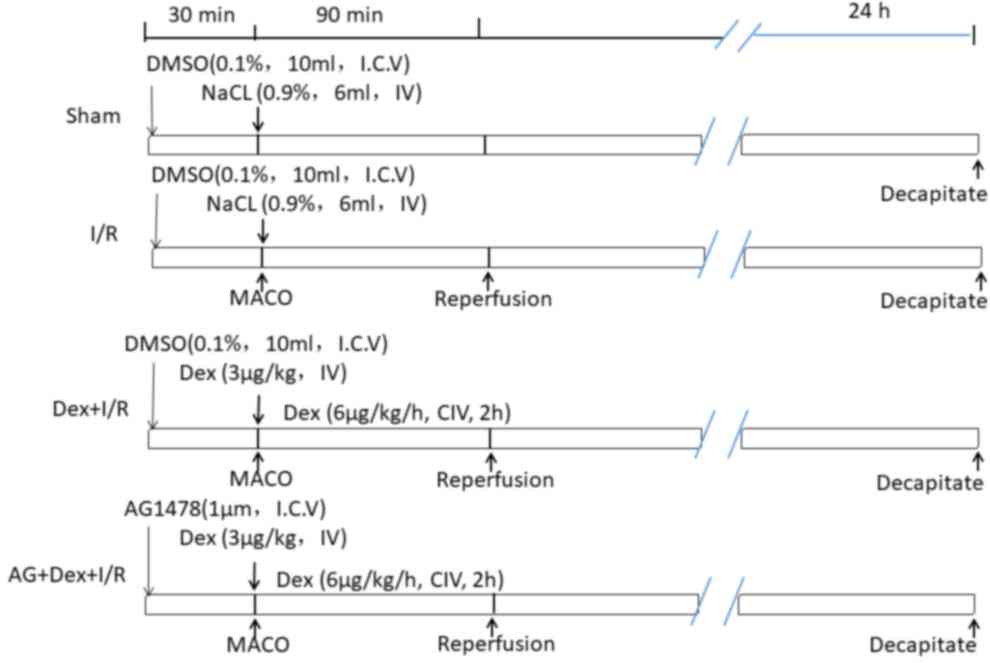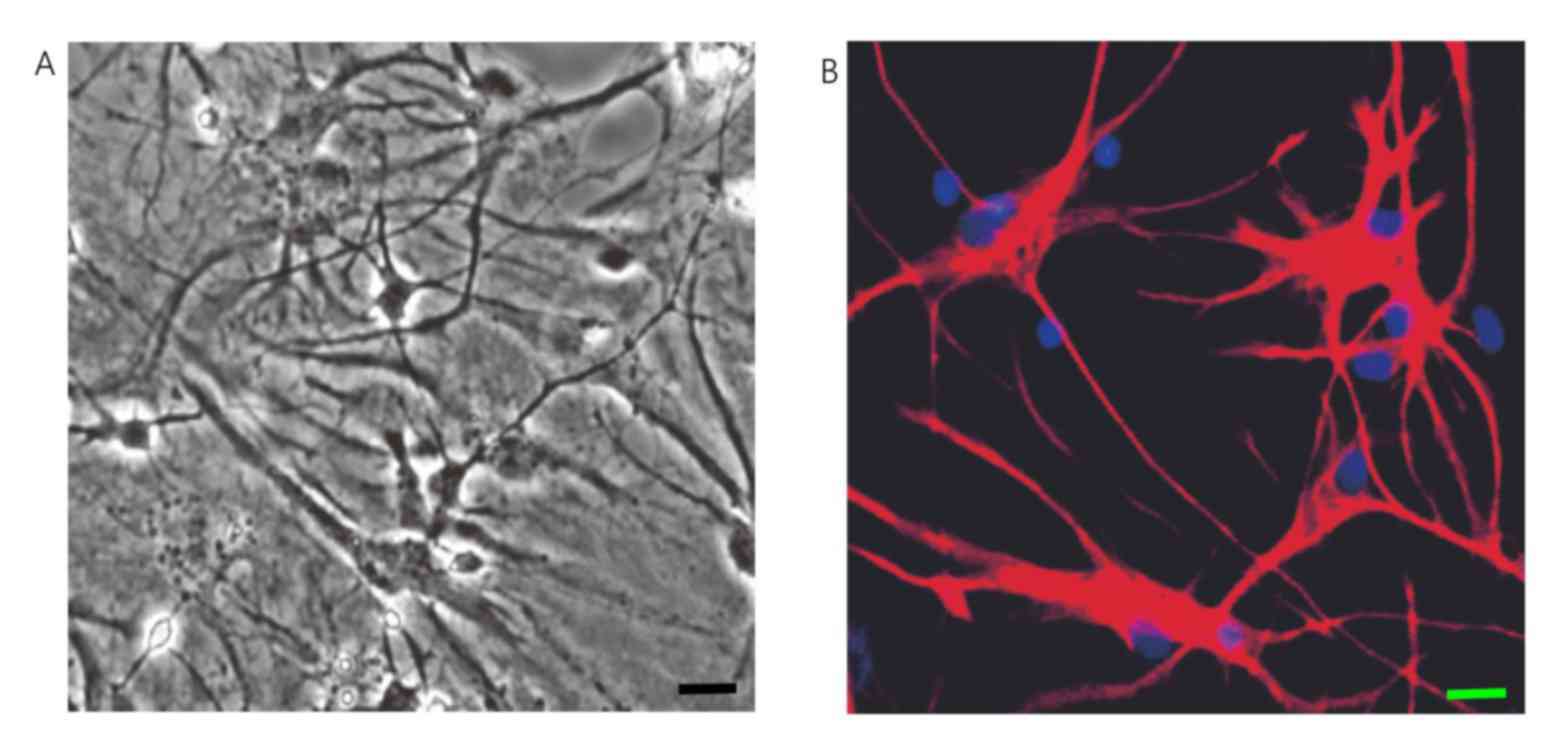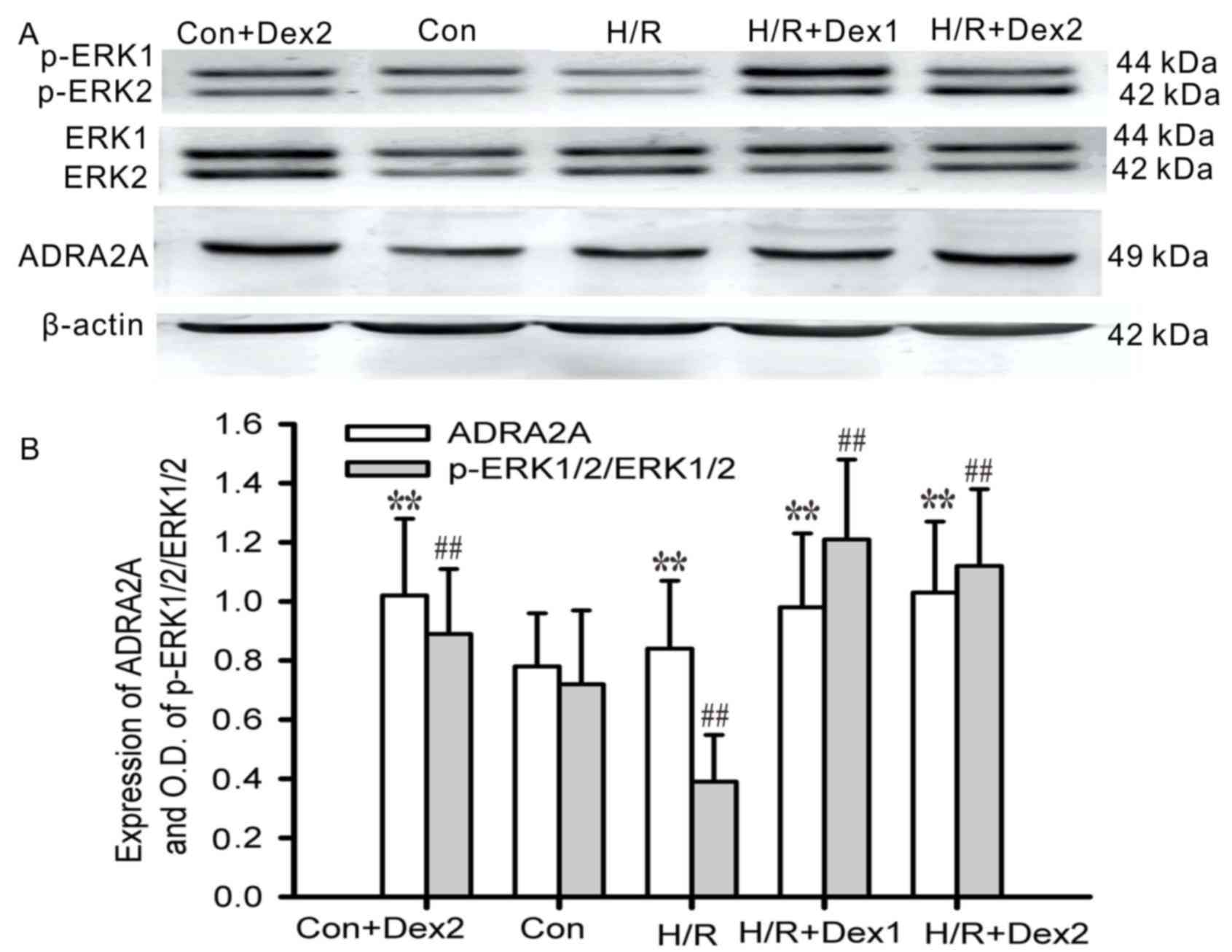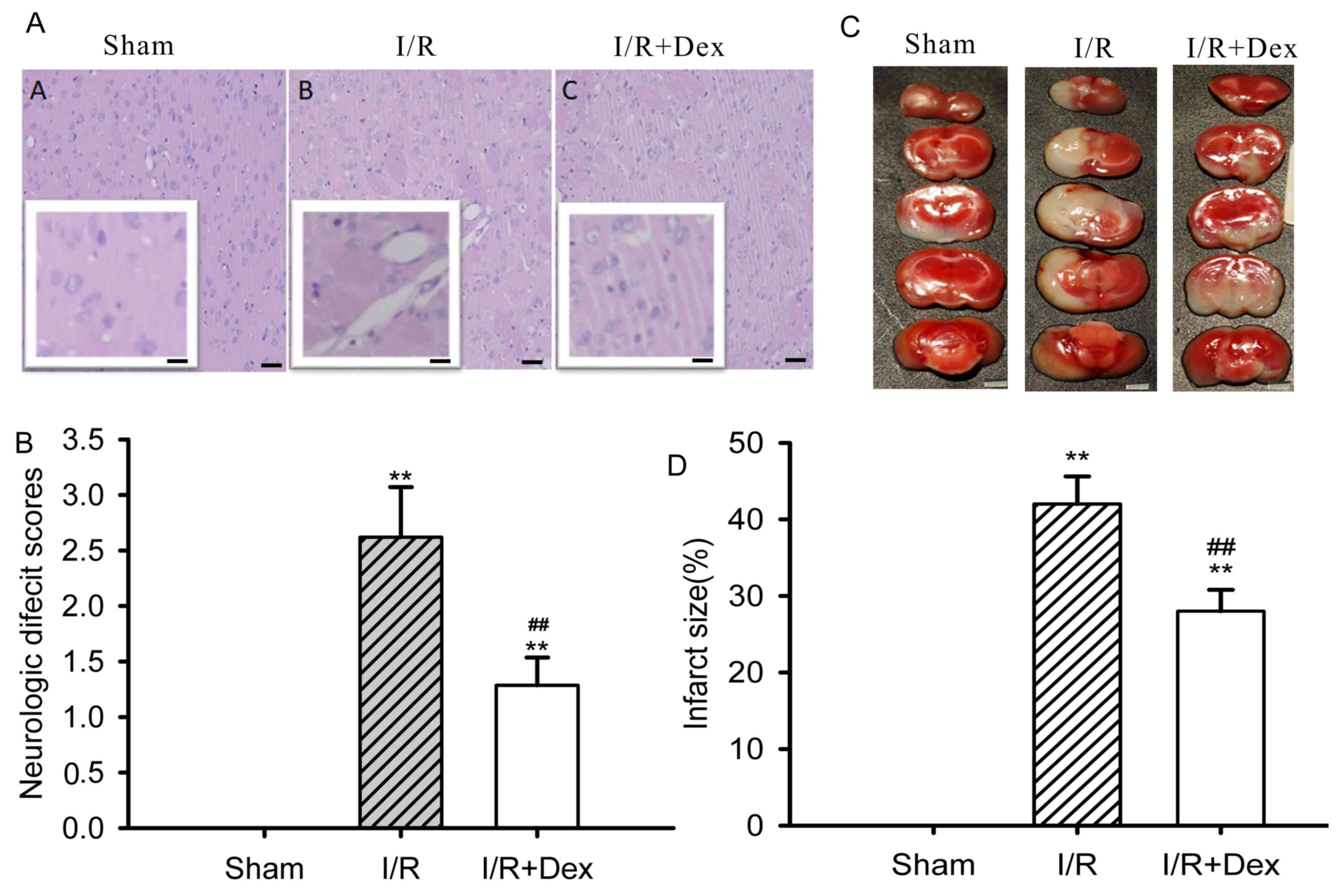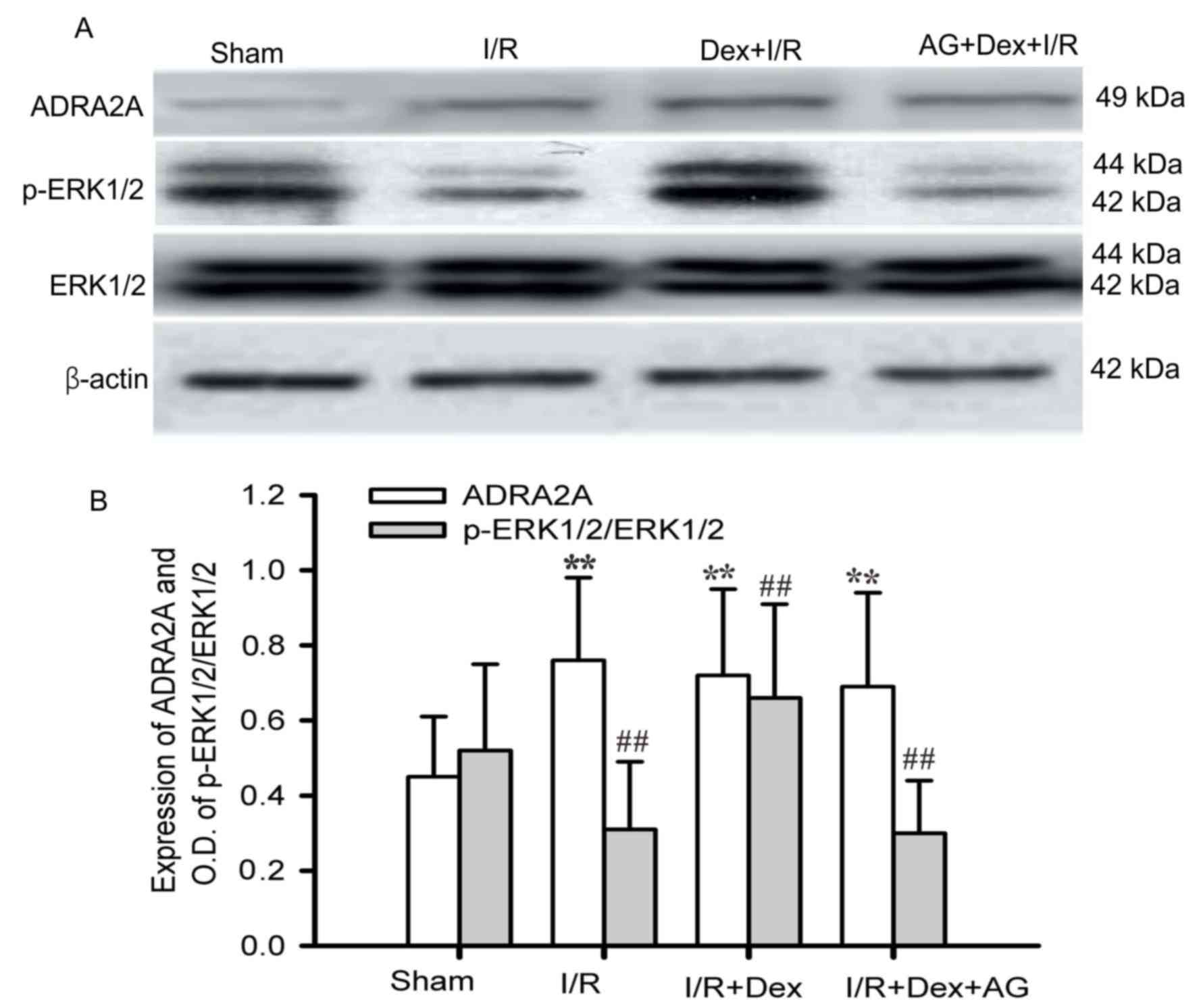|
1
|
Ouyang YB, Xu L, Yue S, Liu S and Giffard
RG: Neuroprotection by astrocytes in brain ischemia: Importance of
microRNAs. Neurosci Lett. 565:53–58. 2014. View Article : Google Scholar : PubMed/NCBI
|
|
2
|
Tuttolomondo A, Di Sciacca R, Di Raimondo
D, Arnao V, Renda C, Pinto A and Licata G: Neuron protection as a
therapeutic target in cute ischemic stroke. Curr Top Med Chem.
9:1317–1334. 2009. View Article : Google Scholar : PubMed/NCBI
|
|
3
|
Barreto GE, Gonzalez J, Torres Y and
Morales L: Astrocytic-neuronal crosstalk: Implications for
neuroprotection from brain injury. Neurosci Res. 71:107–113. 2011.
View Article : Google Scholar : PubMed/NCBI
|
|
4
|
Takano T, Oberheim N, Cotrina ML and
Nedergaard M: Astrocytes and ischemic injury. Stroke. 40 Suppl
3:S8–S12. 2009. View Article : Google Scholar : PubMed/NCBI
|
|
5
|
Lee TH, Kato H, Chen ST, Kogure K and
Itoyama Y: Expression of nerve growth factor and trkA after
transient focal cerebral ischemia in rats. Stroke. 29:1687–1697.
1998. View Article : Google Scholar : PubMed/NCBI
|
|
6
|
Afonso J and Reis F: Dexmedetomidine:
Current role in anesthesia and intensive care. Rev Bras Anestesiol.
62:118–133. 2012. View Article : Google Scholar : PubMed/NCBI
|
|
7
|
Kuhmonen J, Pokorný J, Miettinen R,
Haapalinna A, Jolkkonen J, Riekkinen P Sr and Sivenius J:
Neuroprotective effects of dexmedetomidine in the gerbil
hippocampus after transient global ischemia. Anesthesiology.
87:371–377. 1997. View Article : Google Scholar : PubMed/NCBI
|
|
8
|
Zhu YM, Wang CC, Chen L, Qian LB, Ma LL,
Yu J, Zhu MH, Wen CY, Yu LN and Yan M: Both PI3K/Akt and ERK1/2
pathways participate in the protection by dexmedetomidine against
transient focal cerebral ischemia/reperfusion injury in rats. Brain
Res. 1494:1–8. 2013. View Article : Google Scholar : PubMed/NCBI
|
|
9
|
Kose EA, Bakar B, Kasimcan O, Atilla P,
Kilinc K, Muftuoglu S and Apan A: Effects of intracisternal and
intravenous dexmedetomidine on ischemia-induced brain injury in
rat: A comparative study. Turk Neurosurg. 23:208–217.
2013.PubMed/NCBI
|
|
10
|
Degos V, Charpentier TL, Chhor V, Brissaud
O, Lebon S, Schwendimann L, Bednareck N, Passemard S, Mantz J and
Gressens P: Neuroprotective effects of dexmedetomidine against
glutamate agonist-induced neuronal cell death are related to
increased astrocyte brain-derived neurotrophic factor expression.
Anesthesiology. 118:1123–1132. 2013. View Article : Google Scholar : PubMed/NCBI
|
|
11
|
Dahmani S, Paris A, Jannier V, Hein L,
Rouelle D, Scholz J, Gressens P and Mantz J: Dexmedetomidine
increases hippocampal phosphorylated extracellular signal-regulated
protein kinase 1 and 2 content by an alpha
2-adrenoceptor-independent mechanism: Evidence for the involvement
of imidazoline I1 receptors. Anesthesiology. 108:457–466. 2008.
View Article : Google Scholar : PubMed/NCBI
|
|
12
|
Yan M, Dai H, Ding T, Dai A, Zhang F, Yu
L, Chen G and Chen Z: Effects of dexmedetomidine on the release of
glial cell line-derived neurotrophic factor from rat astrocyte
cells. Neurochem Int. 58:549–557. 2011. View Article : Google Scholar : PubMed/NCBI
|
|
13
|
Jana M, Jana A, Pal U and Pahan K: A
simplified method for isolating highly purified neurons,
oligodendrocytes, astrocytes, and microglia from the same human
fetal brain tissue. Neurochem Res. 32:2015–2022. 2007. View Article : Google Scholar : PubMed/NCBI
|
|
14
|
Liu H, Davis JR, Wu ZL and Faez Abdelgawad
A: Dexmedetomidine attenuates lipopolysaccharide induced MCP-1
expression in primary astrocyte. Biomed Res Int.
2017:63521592017.PubMed/NCBI
|
|
15
|
Chai L, Guo H, Li H, Wang S, Wang YL, Shi
F, Hu LM, Liu Y and Adah D: Scutellarin and caffeic acid ester
fraction, active components of Dengzhanxixin injection, upregulate
neurotrophins synthesis and release in hypoxia/reoxygenation rat
astrocytes. J Ethnopharmacol. 150:100–107. 2013. View Article : Google Scholar : PubMed/NCBI
|
|
16
|
Longa EZ, Weinstein PR, Carlson S and
Cummins R: Reversible middle cerebral artery occlusion without
craniectomy in rats. Stroke. 20:84–91. 1989. View Article : Google Scholar : PubMed/NCBI
|
|
17
|
Levitzki A and Gazit A: Tyrosine kinase
inhibition: An approach to drug development. Science.
267:1782–1788. 1995. View Article : Google Scholar : PubMed/NCBI
|
|
18
|
Alessandrini A, Namura S, Moskowitz MA and
Bonventre JV: MEK1 protein kinase inhibition protects against
damage resulting from focal cerebral ischemia. Proc Natl Acad Sci
USA. 96:12866–12869. 1999. View Article : Google Scholar : PubMed/NCBI
|
|
19
|
Wang L, Lu YY, Zhou Q and Shui XL:
Establishment and evaluation of a murine cerebral
ischemia-reperfusion model. Hainan Med J. 25:2965–2969. 2014.(In
Chinese).
|
|
20
|
Justicia C and Planas AM: Transforming
growth factor-alpha acting at the epidermal growth factor receptor
reduces infarct volume after permanent middle cerebral artery
occlusion in rats. J Cereb Blood Flow Metab. 19:128–132. 1999.
View Article : Google Scholar : PubMed/NCBI
|
|
21
|
Gu L, Li B, Yang X, Hu X, Huang X, Hertz L
and Peng L: Depolarization-induced, glutamate receptor-mediated,
and transactivation-dependent extracellular-signal regulated kinase
phosphorylation in cultured cerebellar granule neurons.
Neuroscience. 147:342–353. 2007. View Article : Google Scholar : PubMed/NCBI
|
|
22
|
Liu Z and Chopp M: Astrocytes, therapeutic
targets for neuroprotection and neurorestoration in ischemic
stroke. Prog Neurobiol. 144:103–120. 2016. View Article : Google Scholar : PubMed/NCBI
|
|
23
|
Barreto G, White RE, Ouyang Y, Xu L and
Giffard RG: Astrocytes: Targets for neuroprotection in stroke. Cent
Nerv Syst Agents Med Chem. 11:164–173. 2011. View Article : Google Scholar : PubMed/NCBI
|
|
24
|
Zhang S, Wu M, Peng C, Zhao G and Gu R:
GFAP expression in injured astrocytes in rats. Exp Ther Med.
14:1905–1908. 2017. View Article : Google Scholar : PubMed/NCBI
|
|
25
|
Ma D, Hossain M, Rajakumaraswamy N, Arshad
M, Sanders RD, Franks NP and Maze M: Dexmedetomidine produces its
neuroprotective effect via the alpha 2A-adrenoceptor subtype. Eur J
Pharmacol. 502:87–97. 2004. View Article : Google Scholar : PubMed/NCBI
|
|
26
|
Milner TA, Lee A, Aicher SA and Rosin DL:
Hippocampal alpha2a-adrenergic receptors are located predominantly
presynaptically but are also found postsynaptically and in
selective astrocytes. J Comp Neurol. 395:310–327. 1998. View Article : Google Scholar : PubMed/NCBI
|
|
27
|
Hein L, Altman JD and Kobilka BK: Two
functionally distinct alpha2-adrenergic receptors regulate
sympathetic neurotransmission. Nature. 402:181–184. 1999.
View Article : Google Scholar : PubMed/NCBI
|
|
28
|
Enkvist MO, Hämäläinen H, Jansson CC,
Kukkonen JP, Hautala R, Courtney MJ and Akerman KE: Coupling of
astroglial alpha 2-adrenoreceptors to second messenger pathways. J
Neurochem. 66:2394–2401. 1996. View Article : Google Scholar : PubMed/NCBI
|
|
29
|
Hertz L, Lovatt D, Goldman SA and
Nedergaard M: Adrenoceptors in brain: Cellular gene expression and
effects on astrocytic metabolism and [Ca(2+)]i. Neurochem Int.
57:411–420. 2010. View Article : Google Scholar : PubMed/NCBI
|
|
30
|
Huang R and Hertz L: Receptor subtype and
dose dependence of dexmedetomidine-induced accumulation of
[14C]glutamine in astrocytes suggests glial involvement in its
hypnotic-sedative and anesthetic-sparing effects. Brain Res.
873:297–301. 2000. View Article : Google Scholar : PubMed/NCBI
|
|
31
|
Jolkkonen J, Puurunen K, Koistinaho J,
Kauppinen R, Haapalinna A, Nieminen L and Sivenius J:
Neuroprotection by the alpha2-adrenoceptor agonist,
dexmedetomidine, in rat focal cerebral ischemia. Eur J Pharmacol.
372:31–36. 1999. View Article : Google Scholar : PubMed/NCBI
|
|
32
|
Du T, Li B, Liu S, Zang P, Prevot V, Hertz
L and Peng L: ERK phosphorylation in intact, adult brain by
alpha(2)-adrenergic transactivation of EGF receptors. Neurochem
Int. 55:593–600. 2009. View Article : Google Scholar : PubMed/NCBI
|
|
33
|
Peng L, Li B, Du T, Kong EK, Hu X, Zhang
S, Shan X and Zhang M: Astrocytic transactivation by
alpha2A-adrenergic and 5-HT2B serotonergic signaling. Neurochem
Int. 57:421–431. 2010. View Article : Google Scholar : PubMed/NCBI
|
|
34
|
Wang SL, Duan L, Xia B, Liu Z, Wang Y and
Wang GM: Dexmedetomidine preconditioning plays a neuroprotective
role and suppresses TLR4/NF-κB pathways model of cerebral ischemia
reperfusion. Biomed Pharmacother. 93:1337–1342. 2017. View Article : Google Scholar : PubMed/NCBI
|
|
35
|
Rodríguez-González R, Sobrino T, Veiga S,
López P, Rodríguez-García J, del Río SV, Baluja A, Castillo J and
Álvarez J; Neuroprotective effects of dexmedetomidine conditioning
strategies, . Evidences from an in vitro model of cerebral
ischemia. Life Sci. 144:162–169. 2016. View Article : Google Scholar : PubMed/NCBI
|
|
36
|
Cheng J, Zhu P, Qin H, Li X, Yu H, Yu H
and Peng X: Dexmedetomidine attenuates cerebral
ischemia/reperfusion injury in neonatal rats by inhibiting TLR4
signaling. J Int Med Res. 46:2925–2932. 2018. View Article : Google Scholar : PubMed/NCBI
|
|
37
|
Yuan F, Fu H, Sun K, Wu S and Dong T:
Effect of dexmedetomidine on cerebral ischemia-reperfusion rats by
activating mitochondrial ATP-sensitive potassium channel. Metab
Brain Dis. 32:539–546. 2017. View Article : Google Scholar : PubMed/NCBI
|















